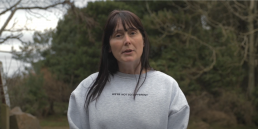Northern Ireland welcomes thousands of people each year who move here many making it a home for life. They often come with a family and add skills and experience to our local economy and workforce. In a modern pattern of migration many people work here for a period and move on as well as those who leave to study and live or work abroad. The pandemic and Brexit have both had an impact on migration over the last two years so a better picture of what has in the 2000s become a normal pattern is the 2019 figures. Net migration to Northern Ireland continued to rise in 2019, official estimates suggest.
The number of people coming to live in Northern Ireland was 25,638 while 20,811 people left, resulting in a net gain of 4,827.
That was the highest number since 2007 when net migration was just under 8,000.
It was the sixth year in a row in which the migrant population has increased.
Boom years
During NI’s economic boom years, annual net immigration peaked at almost 11,000.
It then declined sharply during the recession before rising gradually during the recovery.
In 2019 net migration consisted of 1,114 people from other parts of the UK and 3,713 from elsewhere in the world.
That represented a small decline in net international migration compared to 2018, and a significant increase in intra-UK migration.
The figures give some indication that migration from EU countries is declining – the estimated inflow from Poland was 860 people, the lowest level in 10 years.
Estimated inflows from Lithuania and Romania were also down year on year.
Belfast and the Armagh, Banbridge and Craigavon districts continued to have the highest level of net international inward migration.
Causeway Coast was the only council districts to experience net outflows of international migrants.
These new faces help make Northern Ireland a more diverse and interesting place as they bring language, food and culture from around the world.




